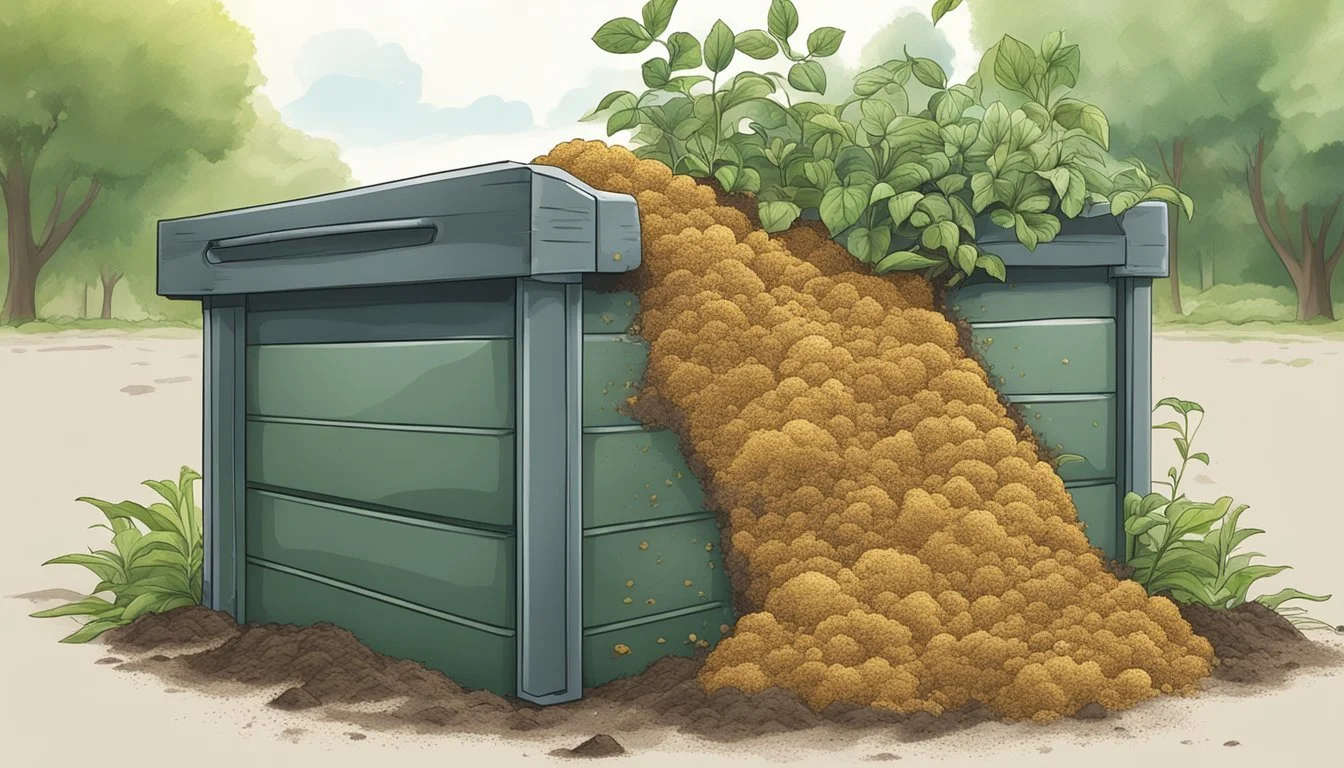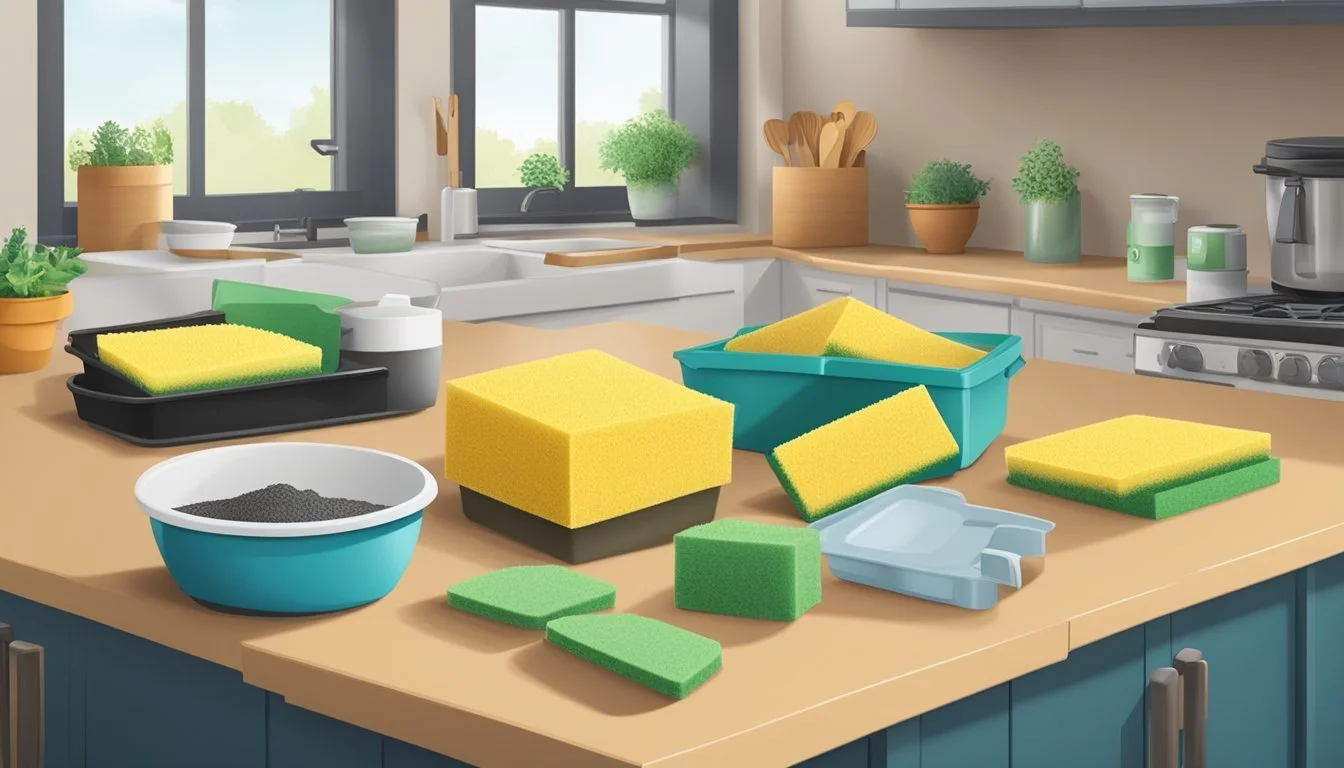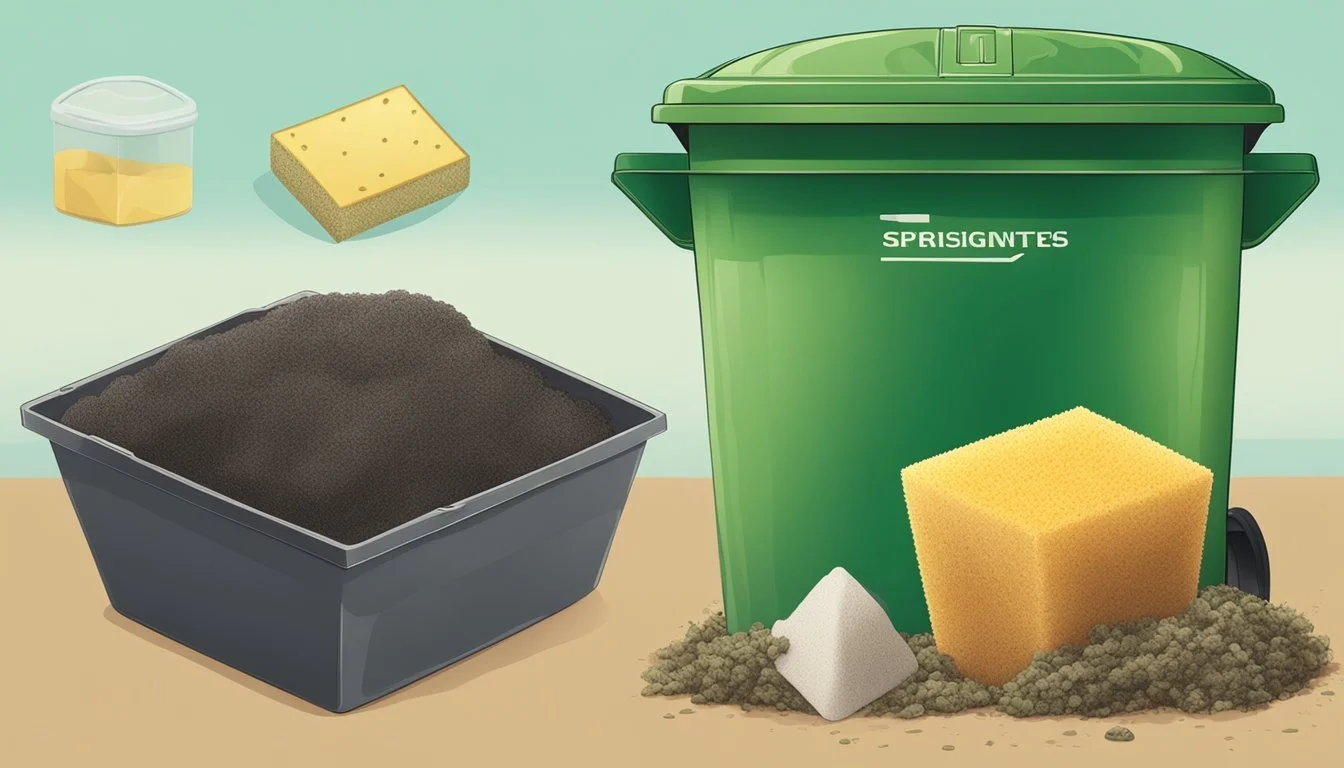Can You Compost Dish Sponges?
Unpacking Biodegradability and Composting Practices
The environmental impact of everyday items is becoming an increasingly important consideration for many people seeking to live sustainably. A common household object that comes under scrutiny is the kitchen dish sponge, which is frequently used and disposed of. The question arises: are these sponges appropriate for the compost bin? The answer depends on the sponge's material. Standard kitchen sponges are often made from synthetic materials such as polyurethane, a form of plastic, and are commonly treated with chemicals to prevent bacterial growth, rendering them unsuitable for composting due to their inability to break down naturally.
Alternatively, sponges made from natural materials like cellulose, a plant-based fiber, present an eco-friendlier option. While cellulose itself is compostable, consumers must be vigilant as these sponges can still contain synthetic chemicals that might interfere with the composting process. It's essential to select sponges that are both made from natural fibers and free of chemical treatments to ensure they can be composted without harming the compost pile's ecosystem.
The market does offer compostable sponges, which are designed to degrade in a compost system, lessening their environmental impact. Such items cater to the growing demand for sustainable household products. The compostability of these sponges permits them to be broken down into organic material that can enrich soil, thereby offering an end-of-life solution that aligns with the principles of permaculture and waste reduction. When choosing kitchen sponges, consumers should consider the long-term environmental benefits of compostable options over the convenience of synthetic ones.
Understanding Composting Basics
The essence of composting lies in facilitating the natural process where organic waste decomposes to form nutrient-rich soil.
Compost Principles and Process
Composting is a biological process where microorganisms, such as bacteria and fungi, break down organic waste in the presence of oxygen. The basic elements required for composting include:
Carbon: This is provided by 'browns' such as dried leaves, twigs, and cardboard, offering energy for the microorganisms.
Nitrogen: Found in 'greens' like food scraps and lawn clippings, it provides proteins for the microbes to grow and reproduce.
Moisture: Essential for microbial activity, the right amount of water speeds up the decomposition process.
Oxygen: Regularly turning the compost pile introduces air, which is critical for aerobic decomposition.
The goal is to maintain a balanced carbon-to-nitrogen ratio, typically 30:1, and ensure sufficient aeration and moisture for the organic matter to decompose effectively. This results in the transformation of waste into compost that can significantly enhance the quality of soil.
Biodegradability and Compostability
Not all materials labeled as biodegradable are suitable for a compost bin. Biodegradability means that an item can break down by biological means. However, compostability goes a step further, requiring that the item breaks down into non-toxic elements that contribute positively to the compost.
Compostable materials are typically of plant or animal origin and decompose to form humus, a component of topsoil. Compostable items should:
Decompose under composting conditions.
Do this within a certain time frame (usually within one composting season).
Break down into carbon dioxide, water, inorganic compounds, and biomass.
Leave no toxic residue.
Materials that are compostable add to the nutrient value of the resulting compost and help maintain necessary moisture and aeration levels within the pile, creating a beneficial environment for composting bacteria to thrive.
Different Types of Dish Sponges
Kitchen sponges play a critical role in maintaining cleanliness but vary widely in composition and environmental impact. Here's an overview of the common sponge types.
Cellulose Sponges
Cellulose sponges are derived from wood pulp and are known for their absorbency and biodegradability. They often contain added chemicals to reduce bacterial growth, which can impact compostability. For environmentalists, unadulterated cellulose sponges are preferred as they decompose more easily.
Synthetic Polymer Sponges
Synthetic polymer sponges, typically made from polyurethane or plastic, are prevalent due to their durability and low cost. However, they are not biodegradable and can contribute to microplastic pollution. These sponges are not suitable for composting because they don't break down naturally in a compost system.
Natural Plant Fiber Sponges
Natural plant fiber sponges encompass options like hemp, bamboo, and loofahs. These materials are sustainably sourced and fully compostable. Some, like loofah, are even derived directly from plants such as the loofah gourd, which breaks down completely in a compost environment. Natural sponges offer an eco-friendly alternative to traditional plastic sponges.
Environmental Considerations for Sponges
When assessing the environmental impact of dish sponges, one must consider both their contribution to landfill waste and their potential to release microplastics into oceans.
Contribution to Waste
Most commonly used dish sponges are made from petroleum-based materials, which are not biodegradable. As a result, they end up in landfills where they remain for hundreds of years. Annually, millions of these sponges are discarded, significantly adding to the plastic waste challenge. Alternatives like 100% cellulose fibre sponges, loofahs, or sponges made from other natural materials like hemp or bamboo are fully biodegradable and represent eco-friendlier options.
Microplastic Pollution and Oceans
Sponges made from synthetic materials can break down into smaller particles known as microplastics. These particles can enter water systems and eventually make their way to oceans, contributing to microplastic pollution. This type of pollution poses a severe risk to marine life and can become part of the food chain, ultimately impacting human health. To mitigate this, consumers are encouraged to opt for sponges made from natural fibers which are less likely to contribute to this form of pollution and may even be recycled or composted successfully, reducing their overall environmental impact.
The Journey of a Sponge to Compost
When composting dish sponges, one must determine if they are made from truly compostable materials like cellulose or other natural fibers. The process of composting sponges involves two main types: cellulose sponges and natural sponges, each taking a unique path in the composting environment.
Composting Cellulose Sponges
Cellulose sponges are made from wood pulp and are biodegradable under the right conditions. When adding a cellulose sponge to a compost pile, one should ensure it doesn't contain synthetic chemicals that could harm the composting process. The steps are as follows:
Prepare the sponge: Before adding the sponge to the compost bin, it must be clean and free of any synthetic chemicals.
Cut into smaller pieces: This accelerates decomposition by increasing the surface area.
Addition to compost: Place the sponge pieces in the compost bin amidst other green waste (nitrogen-rich materials) and brown waste (carbon-rich materials).
The cellulose sponge will gradually decompose, typically in a few weeks to several months, contributing to the creation of rich compost.
Decomposition of Natural Sponges
Natural sponges come from the sea and are plant-like organisms. They are intrinsically biodegradable due to their composition. To compost natural sponges:
Ensure they are wholly natural: Verify the sponge is free from any synthetic additives.
Cut into pieces: As with cellulose sponges, breaking the natural sponge into smaller pieces is beneficial.
Layer appropriately in the compost: Nestle the pieces within the compost pile, mixing well with other materials.
Natural sponges will break down, thanks to the activity of microorganisms within the compost pile, turning into useful soil amendment over time. The time frame for decomposition can vary but typically spans a few months.
Do's and Don'ts of Sponge Disposal
When disposing of kitchen sponges, one should consider the environmental impact. The proper composting of biodegradable sponges can reduce landfill waste, while synthetic sponges should be kept out of the compost bin due to their non-compostable nature.
Proper Composting Practices
Compostable: Only compost sponges made of natural materials like cellulose or loofah. These are biodegradable and can be broken down in a compost pile.
Cut natural sponges into small pieces before adding them to the compost bin, as this helps them decompose quicker.
Ensure the compost pile is balanced with a good mix of 'greens' (kitchen scraps, grass clippings) and 'browns' (dry leaves, cardboard) to foster proper composting.
Avoid composting any sponge soaked in synthetic chemicals as they can introduce harmful substances into the compost and ultimately the soil.
Avoiding Synthetic Sponges in Compost
Synthetic Materials: Sponges made from materials like polyurethane are not suitable for composting. They won't break down and can release microplastics into the soil.
Recycling: Check with local recycling programs to see if they accept polyurethane sponges for recycling.
As a last resort, synthetic spones should go to the landfill, but be mindful of reducing such waste to lessen the environmental burden.
By following these guidelines, individuals can ensure their sponge disposal methods are environmentally friendly and contribute positively to waste reduction efforts.
Alternatives to Traditional Sponges
In the quest for sustainability, consumers have turned to compositions and materials that don't burden landfills. In kitchens around the globe, traditional sponges crafted from non-compostable materials are being replaced by eco-conscious alternatives.
Biodegradable Sponge Options
Loofah sponges: Derived from the loofah plant, these sponges are entirely biodegradable. They serve as an abrasive scrubbing surface, suitable for scrubbing dishes and household cleaning.
Cellulose sponges: Traditionally, these sponges are compostable, as they are made from wood pulp. However, consumers should check for chemical-free variants to ensure full compostability.
Sea sponges: Harvested from the ocean, natural sea sponges are biodegradable and can be used in the kitchen, although they are more typically used for body care due to their gentle texture.
Hemp sponges: Hemp is a sustainable, biodegradable material that's turned into long-lasting sponges for cleaning.
Reusable and Eco-Friendly Sponges
Bamboo and coconut fiber sponges: These sponges are made from sustainable materials and offer a durable option that can be reused many times.
Swedish dishcloths: Made from cellulose and cotton, Swedish dishcloths are highly absorbent, washable, and can replace many single-use paper towels, making them a zero-waste option.
Eco-friendly scrubbers: Sponges made from walnut shells, coconut husks, or other plant fibers are designed to be eco-friendly, reducing the reliance on synthetic nylon scrubbers.
When selecting an eco-friendly sponge, consumers should consider the product's lifecycle—from resource sourcing through its after-use disposal. Compostable sponges and those made from natural, sustainable materials are not only better for the environment but also for the proactive, green-minded individual's peace of mind.
Care and Maintenance of Compostable Sponges
Compostable sponges require specific care to ensure they remain hygienic and effective throughout their use. Proper cleaning and maintenance help lengthen their lifespan while minimizing the growth and spread of bacteria.
Cleaning and Sterilization
To clean compostable sponges, one should rinse them thoroughly with hot water after each use to remove any residual dirt and grease. For sterilization, a person can occasionally soak sponges in a mixture of hot water and vinegar, a natural disinfectant, for about five minutes. Alternatively, boiling sponges for a couple of minutes can eradicate most germs and bacteria without the use of harsh chemicals like bleach, which can degrade natural fibers and is not recommended for compostable materials.
Rinse with hot water to remove residue.
Soak in hot water and vinegar mixture for 5 minutes.
Boil for 1-2 minutes for deeper sterilization.
Maximizing Sponge Lifespan
To maximize the longevity of compostable sponges, individuals should wring them out completely after each use to prevent the growth of mold and bacteria. Sponges should be left to dry completely between uses in a well-ventilated area. It's crucial to avoid using them with abrasive chemicals that could break down natural materials. Additionally, having multiple sponges in rotation can ensure that each one gets a proper drying period, thereby extending their usability.
Wring out sponges thoroughly after use.
Allow to air dry in a ventilated space.
Alternate between multiple sponges to aid drying and resting periods.
Innovations in Compostable Sponge Products
The shift to sustainable cleaning tools has led to the emergence of innovative compostable sponge products. These items are tailored to meet the environmental needs of the modern household without compromising on efficacy.
Brands Paving the Way
Marley’s Monsters introduces a washable sponge that combines practicality and sustainability. Made of cotton and other natural ingredients, these sponges are reusable and an excellent alternative to traditional products.
Two Acre Farm offers the Eco Sponge, handcrafted and designed to be fully compostable. These sponges are made with organic materials, ensuring they break down without leaving harmful residues.
Etee brings to the market the Loofie Scrubbers, an innovative blend of loofah material and cellulose fibers, asserting a commitment to zero-waste principles. They are plant-based and can biodegrade in compost.
Skoy provides the Skoy Scrub, a durable option engineered from natural ingredients. This product tackles tough messes and is a testament to the brand's commitment to eco-friendly cleaning solutions.
Safix has developed the Natural Non-Scratch Multi-Purpose Coconut Scrub-Pad. Crafted from coconut fibers, this pad is effective yet gentle on surfaces and decomposes naturally after use.
Full Circle emphasizes a circular economy and brings forth sponges made from plant-based materials, targeting those who seek eco-friendly and practical kitchen aids.
These brands each contribute to a growing market of sustainable sponges, utilizing materials such as wool, cotton, and other plant-based fibers to create products that not only clean effectively but also compost easily, supporting the health of our planet.




